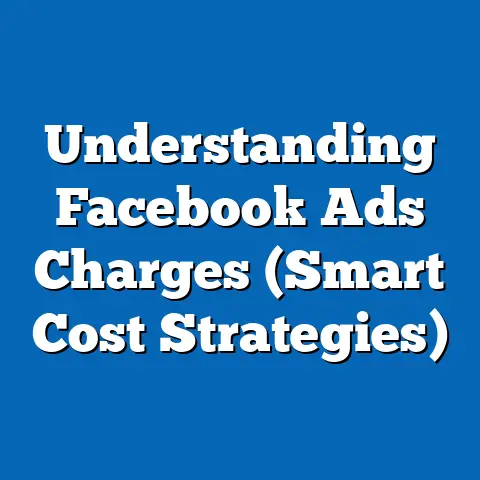Mastering Facebook Political Ads API (Unlock Powerful Insights)
In the ever-evolving landscape of political campaigns, where every vote counts and every message matters, understanding the nuances of voter behavior is paramount. As a digital marketing specialist with years of experience navigating the complex world of online advertising, I’ve seen firsthand how data-driven strategies can make or break a campaign. In this article, I’ll delve into the intricacies of the Facebook Political Ads API, a powerful tool that offers invaluable insights for political campaigns seeking to maximize their impact and reach their target audience effectively.
Understanding the Facebook Political Ads API
The Facebook Political Ads API is a specialized interface designed to provide detailed information about political advertising on the platform. Unlike the standard Facebook Ads Manager, which is geared towards general advertising purposes, the Political Ads API offers a deeper dive into the world of political messaging, allowing users to track and analyze the performance of political ads with greater precision.
Why is this significant? In today’s political climate, where social media plays a pivotal role in shaping public opinion, understanding the effectiveness of political ads is crucial. The API enables campaigns to monitor their own ads as well as those of their competitors, providing a comprehensive view of the digital battleground.
How does it differ from standard Facebook Ads Manager tools? The standard Ads Manager provides a broad overview of ad performance, focusing on metrics such as reach, impressions, and engagement. The Political Ads API, on the other hand, offers more granular data specific to political ads. This includes information on ad targeting, demographic breakdowns of viewers, and detailed expenditure tracking.
What types of data and insights are available through the API? The API provides access to a wealth of data, including:
- Ad Performance Metrics: Track impressions, reach, clicks, and engagement specific to political ads.
- Targeting Options: Understand the targeting parameters used by different campaigns, including demographics, interests, and behaviors.
- Demographic Information: Gain insights into the age, gender, location, and other demographic characteristics of viewers exposed to political ads.
- Expenditure Tracking: Monitor the amount of money spent on political ads by different campaigns, providing transparency and accountability.
- Ad Creative Analysis: Examine the text, images, and videos used in political ads to identify effective messaging strategies.
Takeaway: The Facebook Political Ads API is a powerful tool for political campaigns seeking to gain a competitive edge in the digital realm. By providing access to detailed data and insights, the API enables campaigns to make informed decisions about their advertising strategies, optimize their messaging, and ultimately, resonate with voters more effectively.
Setting Up Access to the API
Gaining access to the Facebook Political Ads API involves a few key steps. As someone who has guided numerous clients through this process, I can assure you that while it may seem daunting at first, it’s entirely manageable with the right guidance.
Step 1: Obtaining a Facebook Developer Account
First, you’ll need a Facebook Developer account. If you don’t already have one, you can create one by visiting the Facebook Developers website and following the registration process. This account will serve as your gateway to accessing Facebook’s APIs.
Step 2: Creating an App
Once you have a Developer account, you’ll need to create an app. This app will serve as the conduit through which you’ll access the Political Ads API. When creating the app, be sure to select the appropriate category and provide a clear description of its intended use.
Step 3: Requesting API Access
Next, you’ll need to request access to the Political Ads API. This involves submitting a request to Facebook and providing documentation to verify your identity and purpose. Be prepared to provide information about your organization, your role, and how you plan to use the API.
Step 4: Obtaining Necessary Permissions and Tokens
Once your request is approved, you’ll need to obtain the necessary permissions and tokens required for API access. This typically involves generating an access token through the Facebook Developer platform. Make sure to store this token securely, as it’s essential for authenticating your API requests.
Prerequisites and Compliance
Before diving into the setup process, it’s crucial to understand the prerequisites and compliance requirements. You’ll need to comply with Facebook’s advertising policies, which prohibit discriminatory advertising practices and require transparency in political advertising. Additionally, you may need to disclose information about your funding sources and affiliations.
Takeaway: Setting up access to the Facebook Political Ads API requires careful planning and attention to detail. By following the steps outlined above and ensuring compliance with Facebook’s policies, you can unlock the power of the API and gain valuable insights into the world of political advertising.
Key Features of the API
The Facebook Political Ads API is packed with features that can provide political campaigns with a significant competitive edge. From analyzing ad creatives to tracking expenditures, the API offers a wealth of information that can be leveraged to optimize advertising strategies.
Ad Creative Analysis
One of the most valuable features of the API is its ability to analyze ad creatives. By examining the text, images, and videos used in political ads, campaigns can gain insights into what types of messaging resonate with voters. For example, the API can help identify common themes, keywords, and visual elements used in successful ads.
Target Audience Insights
Understanding your target audience is crucial for any political campaign. The API provides detailed insights into the demographics, interests, and behaviors of viewers exposed to political ads. This information can be used to refine targeting parameters and ensure that ads are reaching the right people.
Expenditure Tracking
Transparency in political advertising is essential for maintaining public trust. The API allows users to track the amount of money spent on political ads by different campaigns, providing accountability and helping to prevent the spread of misinformation.
Example: Imagine a political campaign seeking to understand why a particular ad is performing well. By using the API to analyze the ad creative, they discover that the ad’s success is due to its use of emotionally charged language and imagery. Armed with this insight, the campaign can create similar ads that leverage the same emotional triggers to resonate with voters.
Takeaway: The Facebook Political Ads API offers a range of key features that can help political campaigns gain a competitive edge. By analyzing ad creatives, understanding target audiences, and tracking expenditures, campaigns can optimize their advertising strategies and maximize their impact.
Analyzing Data for Insights
Once you’ve gained access to the Facebook Political Ads API and familiarized yourself with its key features, the next step is to analyze the data to uncover actionable insights. This involves using various analytics tools and methods to interpret the data and understand voter behavior and preferences.
Data Visualization Techniques
Data visualization is a powerful tool for making sense of complex data sets. By using charts, graphs, and other visual aids, you can identify patterns, trends, and outliers that might otherwise go unnoticed. For example, you can create a bar chart to compare the performance of different political ads or a line graph to track changes in ad spending over time.
Statistical Analysis
Statistical analysis can help you identify statistically significant relationships between different variables. For example, you can use regression analysis to determine whether there is a correlation between ad spending and voter turnout. This can help you understand which advertising strategies are most effective at driving voter engagement.
Understanding Voter Behavior and Preferences
The ultimate goal of analyzing data from the Political Ads API is to understand voter behavior and preferences. By examining the demographics, interests, and behaviors of viewers exposed to political ads, you can gain insights into what issues matter most to voters and what types of messaging resonate with them.
Example: Suppose you’re analyzing data from the API and notice that ads targeting young voters with messages about climate change are performing particularly well. This might indicate that climate change is a key issue for young voters and that they are more likely to support candidates who address this issue in their campaigns.
Takeaway: Analyzing data from the Facebook Political Ads API is essential for uncovering actionable insights that can inform your political advertising strategies. By using data visualization techniques, statistical analysis, and other methods, you can gain a deeper understanding of voter behavior and preferences, and ultimately, create more effective advertising campaigns.
Case Studies of Successful Political Campaigns
To illustrate the power of the Facebook Political Ads API, let’s examine some real-world examples of political campaigns that have successfully utilized the API to gain a competitive edge.
Case Study 1: The Obama Campaign (2012)
The Obama campaign in 2012 was a pioneer in the use of data-driven strategies in political advertising. The campaign used the Facebook Political Ads API to analyze voter data, identify key demographics, and target ads with personalized messages. By tailoring their messaging to specific voter segments, the Obama campaign was able to increase voter engagement and turnout.
Case Study 2: The Trump Campaign (2016)
The Trump campaign in 2016 also made extensive use of data-driven strategies, although with a different approach. The campaign used the Facebook Political Ads API to identify and target voters who were likely to be receptive to their message. By focusing on specific voter segments, the Trump campaign was able to maximize their impact and win the election.
How These Campaigns Adapted Their Strategies
Both the Obama and Trump campaigns adapted their strategies based on data insights from the API. The Obama campaign used data to refine their messaging and target ads with personalized messages, while the Trump campaign used data to identify and target voters who were likely to be receptive to their message.
Example: The Obama campaign used data from the API to identify voters who were undecided on the issue of healthcare reform. The campaign then created ads that addressed the concerns of these voters and highlighted the benefits of the Affordable Care Act.
Takeaway: These case studies demonstrate the power of the Facebook Political Ads API to inform political advertising strategies and drive voter engagement. By analyzing data from the API and adapting their strategies accordingly, political campaigns can maximize their impact and achieve their goals.
In conclusion, mastering the Facebook Political Ads API is essential for political campaigns seeking to gain a competitive edge in today’s data-driven world. By leveraging the API’s key features, analyzing data for insights, and adapting strategies based on those insights, campaigns can create more targeted, effective advertising strategies that resonate with voters.
As someone who has worked with numerous political campaigns over the years, I can attest to the transformative power of data-driven strategies. By embracing the Facebook Political Ads API and other data analytics tools, campaigns can unlock a wealth of insights that can help them connect with voters on a deeper level, build stronger relationships, and ultimately, achieve their goals.
I encourage you to explore the potential of the API and consider how you can implement its features in your own political advertising efforts. By doing so, you can ensure that your campaign remains competitive in an increasingly data-centric world.





